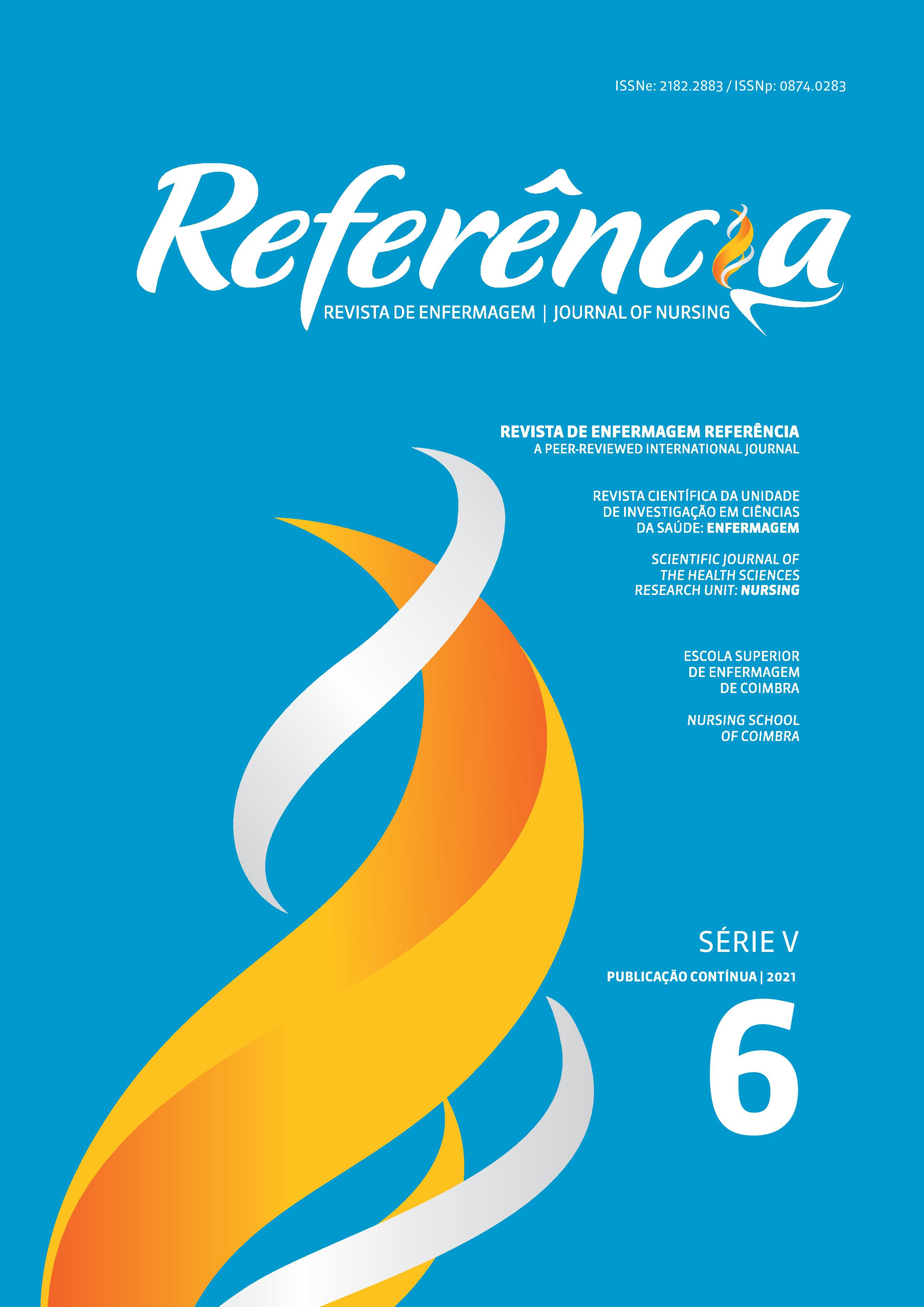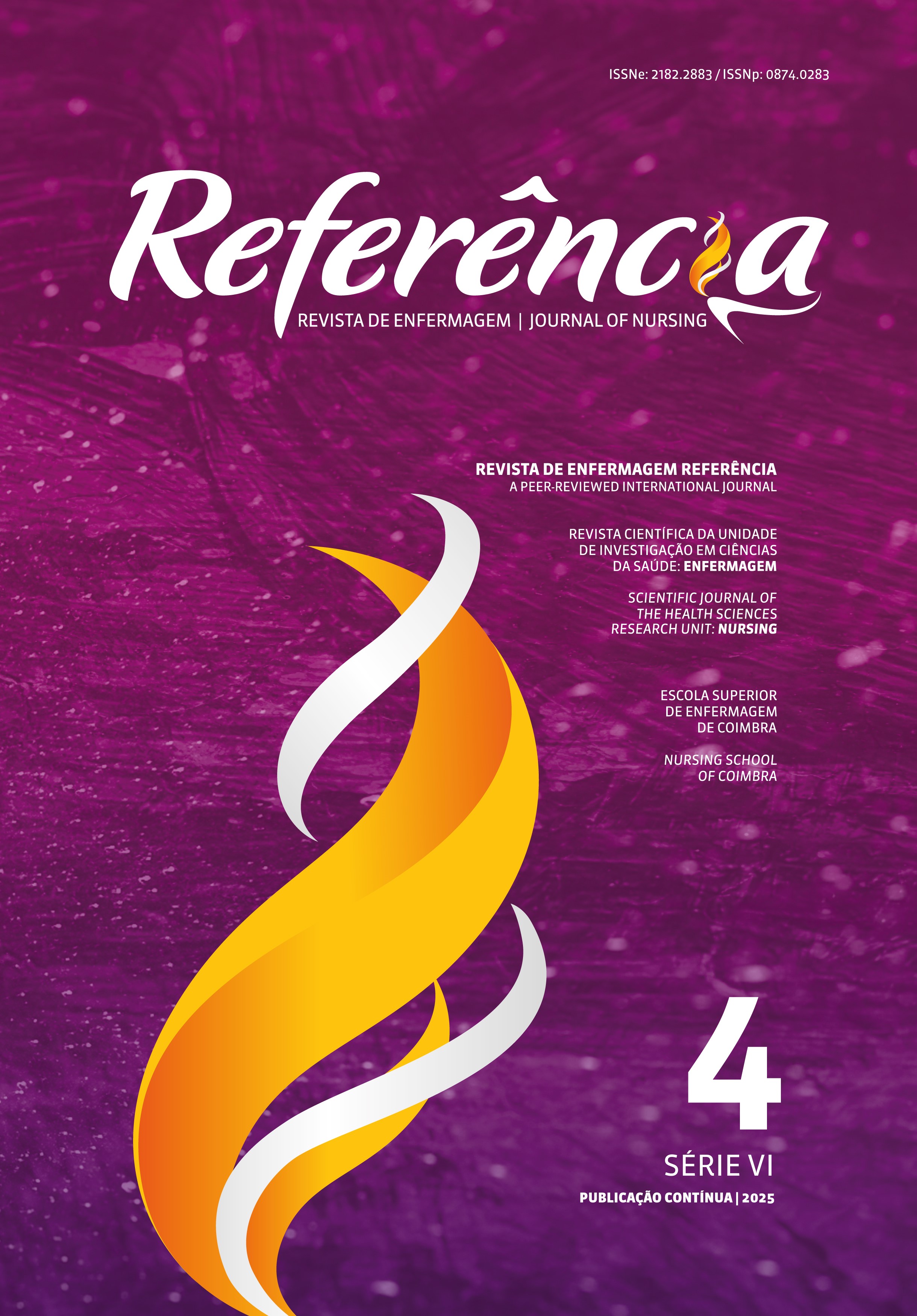Fatores que colocam em perigo o desenvolvimento das crianças e jovens referenciados às comissões de proteção
DOI:
https://doi.org/10.12707/RV20046Palavras-chave:
cuidadores, perigo, risco, proteção, crianças, jovensResumo
Enquadramento: Assistir crianças em situação de risco e/ou perigo exige uma avaliação criteriosa, que conduza a uma decisão sustentada e coerente.
Objetivos: Identificar os fatores de risco dos cuidadores que colocam em perigo as crianças e jovens referenciados à Comissão Proteção de Crianças e Jovens (CPCJ).
Metodologia: Este estudo descritivo de abordagem qualitativa, realizado entre outubro e dezembro de 2018 teve como amostra 20 processos de crianças/jovens referenciados a uma CPCJ. A informação recolhida dos processos foi analisada através da técnica de Bardin.
Resultados: Como cuidadores surgem os progenitores (54%), sendo a negligência a problemática mais elevada das crianças sinalizadas à CPCJ. Quanto aos fatores de risco, destacam-se as condições financeiras da família; necessidades inerentes ao desenvolvimento da criança e os métodos de disciplina; problemas comunicacionais; problemas de saúde mental e a ausência de suporte da família alargada, seguida dos padrões de relação familiares.
Conclusão: Identificaram-se fatores de risco que poderão permitir a construção de um instrumento para uma avaliação concertada e consequente medida adequada às necessidades das famílias.
Downloads
Referências
Bardin, L. (2015). Análise de Conteúdo. Edições 70.
Benbenishty, R., Davidson-Aradb, B., López, M., Devaney, J., Spratt, T., Koopmans, C., Knorth, E. J., Witteman, C. L., Valle, J. F., & Hayes, D. (2015). Decision making in child protection: Na international comparative study on maltreatment substantiation, risk assessment and interventions recommendations, and the role of professionals’ child welfare attitudes. Child Abuse & Neglect, 49, 63-75. https://doi.org/10.1016/j.chiabu.2015.03.015
U.S. Department of Health & Human Services. (2019). Children’s Bureau. https://www.acf.hhs.gov/cb/about/what-we-do
Comissão Nacional de Promoção dos Direitos e Proteção das Crianças e Jovens. (2019). Avaliação da atividade das CPCJ. https://www.cnpdpcj.gov.pt/inicio
Davidson, R., Tomlinson, C., Beck, C., & Bowen, A. (2019). The revolving door of families in the child welfare system: Risk and protective factors associated with families returning. Children and Youth Services Review, 100, 468-479. https://doi.org/10.1016/j.childyouth.2019.03.012
Duffy, J. Y., Hughes, M., Asnes, A. G., & Leventhal, J. M. (2015). Child maltreatment and risk patterns among participants in a child abuse prevention program a child abuse prevention program. Child Abuse & Neglect, 44, 184-193. https://doi.org/10.1016/j.chiabu.2014.11.005
Francisco, R., Pinto, J. C., & Pinto, H. R. (2016). Família e psicologia: Contributos para a investigação e intervenção. Universidade Católica.
Fuller, T. L., Paceley, M. S., & Schreiber, J. C. (2015). Differential response family assessments: Listening to what parents say about service helpfulness. Child Abuse & Neglect, 39, 7-17. https://doi.org/10.1016/j.chiabu.2014.05.010
Glad, J., Jergeby, U., Gustafsson, C., & Sonnander, K. (2014). Social worker and teacher apprehension of children’s stimulation and support in the home environment and caregiver perception of the HOME Inventory in Sweden. British Journal of Social Work, 44(8), 2218–2236. https://doi.org/10.1093/bjsw/bct075
Goltz, H. H., Mena, K. C., & Swank, P. R. (2014). Using growth curve analysis to examine challenges in instrumentation in longitudinal measurement in home visiting. Journal of Evidence-Based Social Work, 11(1-2), 127-138. https://doi.org/10.1080/15433714.2013.845025
Jenkins, B. Q., Tilbury, C., Hayes, H., & Mazerolle, P. (2018). Factors associated with child protection recurrence in Australia. Child Abuse & Neglect, 81, 181-191. https://doi.org/10.1016/j.chiabu.2018.05.002
Laslett, A.-M., Room, R., & Dietze, P. (2014). Substance misuse, mental health problems and recurrent child maltreatment. Emerald Group Publishing Limited, 7(1), 15-23. https://doi.org/10.1108/ADD-11-2013-0026
Loman, A. L., & Siegel, G. L. (2015). Effects of approach and services under differential response on long term child safety and welfare. Child Abuse & Neglect, 39, 86-97. https://doi.org/10.1016/ j.chiabu.2014.05.014
Malo, C., Moreau, J., Lavergne, C., & Hélie, S. (2016). Psychological maltreatment, the under-recognized violence against children: A new portrait from Quebec. Child Welfare, 95, 77-99.
Pelton, L. (2015). The continuing role of material factors in child maltreatment and placement. Child Abuse & Neglect, 41, 30-39. https://doi.org/10.1016/j.chiabu.2014.08.001
Schneiderman, I., Zagoory-Sharon, O., Leckman, J. F., & Feldman, R. (2012). Oxytocin during the initial stages of romantic attachment: Relations to couples’ interactive reciprocity. Psychoneuroendocrinology, 37(8), 1277-1285. https://doi.org/10.1016/j.psyneuen.2011.12.021
Schreiber, J., Fuller, T., & Paceley, M. (2013). Engagement in child protective services: Parent perceptions of worker skills. Children and Youth Services Review, 35(4), 707-715. https://doi.org/10.1016/j.childyouth.2013.01.018
Toros, K., DiNitto, D. M., & Tiko, A. (2018). Family engagement in the child welfare system: A scoping review. Children and Youth Services Review, 88, 598-607. https://doi.org/10.1016/j.childyouth.2018.03.011
Ward, H., Brown, R., & Hyde-Dryden, G. (2014). Assessing parental capacity to change when children are on the edge of care: An overview of current research evidence. Loughborough University, Department for Education. https://www.gov.uk/government/uploads/system/uploads/attachment_data/file/330332/RR369_Assessing_parental_capacity_to_change_Final.pdf






















